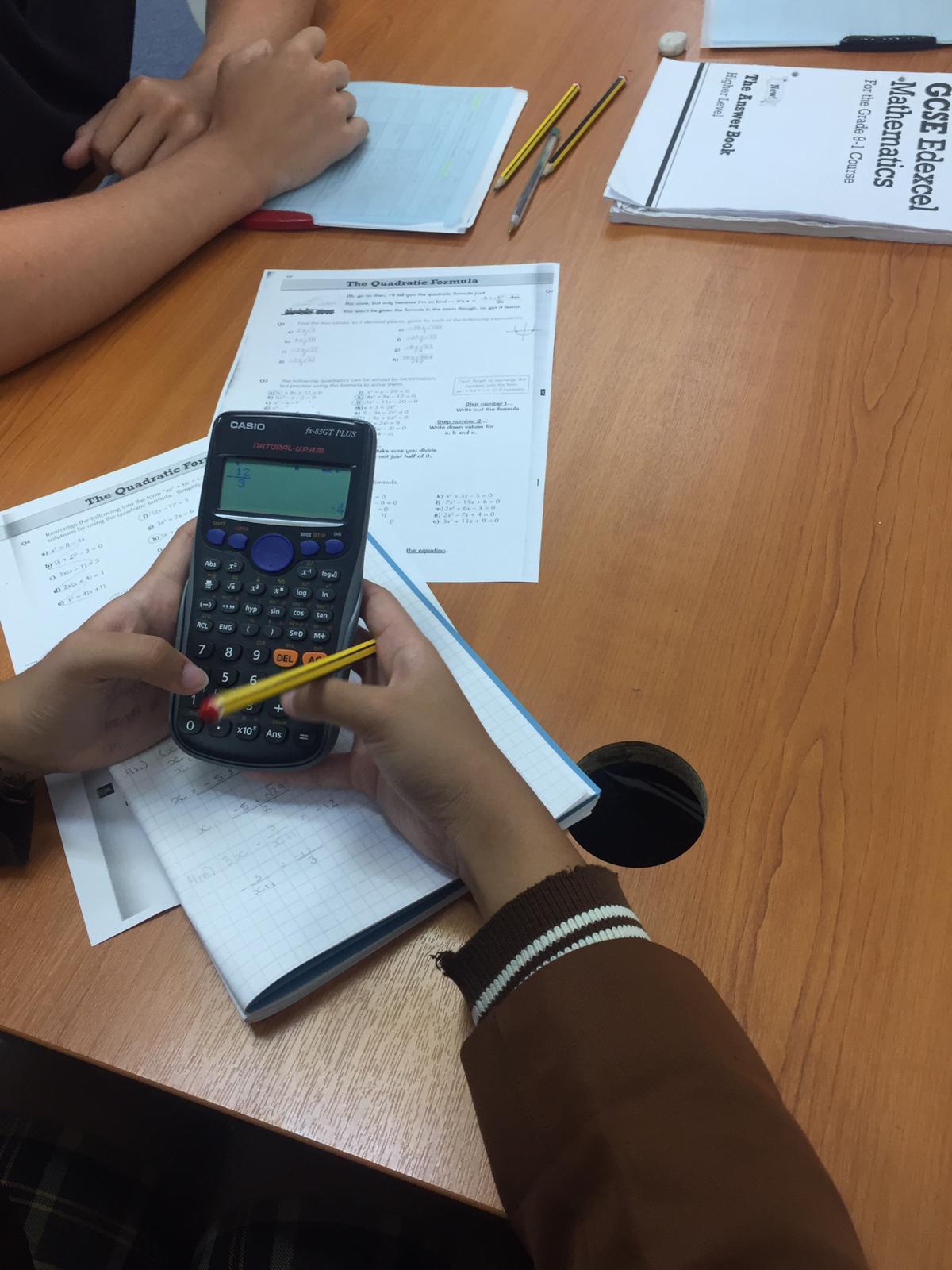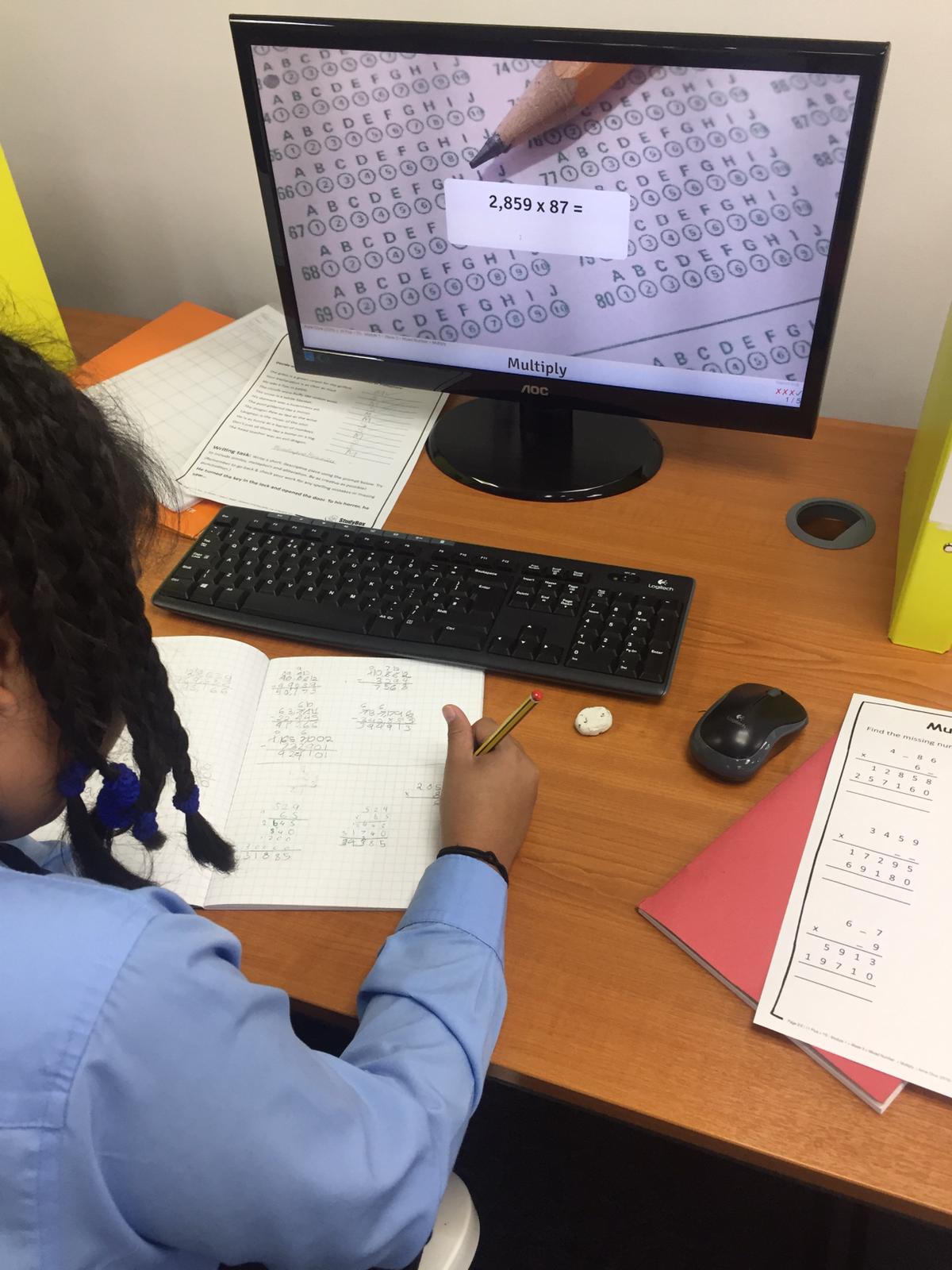3 ways to help your child at home with their work

As a parent, there are many things you can do at home to help your child with their school work.
If you’re wondering what you can do to improve education, why not try our 3 ways to help your child at home with their work:
Healthy Lifestyle
- Ensure your child is getting enough sleep. It’s recommended that children need between 8 and 12 hours of sleep every night.
- A healthy, balanced diet will improve the way your child functions. For example, calcium and Vitamin D helps strengthen bones and growth, iron is good for cognitive ability and Omega 3 helps the brain to function.
- Lots of fruit and vegetables are important, as well as meat, fish and wholegrains.
Routine
- Establishing a routine for your child will help them be organised and have structure in their day-to-day life.
- This can be making sure they pack a school bag the night before, completing homework the day it is set and having a regular bed time.
- Try setting a morning routine: enough time for having breakfast, brushing teeth and getting dressed. And an evening routine: set a time for completing homework, a set dinner time and time for winding down in the evening.
Education
- Reading with your child at home will improve vocabulary, imagination and pronunciation. You can read a few pages per night together. If they are confident reading alone, then try encouraging them to read a few pages of a book every night before bed.
- Complete homework together. You can teach them new concepts and provide any extra help when needed.
- Additional tuition. If there’s any subjects that are more challenging over others, why not consider after-school tuition? At StudyBox, we provide 1-1 support with tutors tailored to each individual student.
There are plenty of opportunities as a parents to help your child at home with their education.
Try our 3 ways to help your child at home: assisting with schoolwork, setting a routine to help time management and completing tasks, and maintaining a healthy lifestyle by getting plenty of sleep and having a healthy diet.
If your child needs any extra help in difficult subject areas, why not consider additional tuition with StudyBox?
Finding the right learning style for your child

Everyone learns differently.Which is why finding the right learning style for your child will help you to support and assist with their learning effectively.
As a parent, you can apply their individual style and use this method to help them learn!
Visual
- Learning by seeing.
- This learner benefits by looking at pictures and imagery.
- If your child is a visual learner, they may enjoy drawing or writing out notes. Anything visual, like examples or colourful notes, will help them to remember concepts and ideas.
Study tips:
- Create colourful notes for studying.
- Draw mind maps, graphs and pictures.
Auditory
- Learning by hearing.
- This means that learning through sounds and music.
- If your child learns best through talking aloud, they may be an auditory learner.
- Auditory learning can also involve music to help with schoolwork or listening to instructions.
Study tips:
- Playing music whilst your child is studying might help them to remember notes.
- Try talking out notes aloud to speed up the process.
- Creating songs about study notes may help your child memorise effectively.
Kinaesthetic
- Learning by doing.
- This person learns by touching and movement.
- Kinaesthetic learning includes being good at sports and physical activities.
- It also involves learning through hands-on activities.
Study tips:
- Try drawing out images or writing out notes for easier memorisation.
- You can act out scenarios with your child to help them revise.
- Try to create learning games to make the activity fun.
Logical
- Learning through logic.
- This learner understands through reasoning and numerical problem solving.
- Understanding the logical reason behind ideas helps this type of learner make sense of things.
- Logical learners usually learn best by following a set of rules or instructions.
Study tips:
- Create word problems to help your child make sense of the question.
- Problem solving, like test and equations, is the best way to test material.
Social
- Learning by talking and interacting.
- The person learns by communicating and working in groups.
- A social learner will benefit from role playing, working on projects or communicating with others.
Study tips:
- Organising study groups will help a social learner to share ideas and work collaboratively.
- Try engaging with your child by talking through concepts and material.
- You can have a discussion or debate and challenge them, helping to form arguments and remember key points.
Identifying how your child learns best can help you to assist them with learning the most effective way possible. For example, if they are a visual learner, drawing out mind maps with revision notes can help them by seeing the information in front of them.
They can apply the way they learn to any situation by adapting the material to their learning style. This will stay with them for life, as they can learn effectively through using their own, unique method with the task they are set.
For other learning techniques, like engaging children with their learning, read more on our blog.
Improving your child’s vocabulary at home

Improving your child’s vocabulary at home will help them to succeed in future!
Encouraging your child to expand on their vocabulary from a young age is essential.
It will help them to communicate effectively and make a difference with school work.
Having an expansive vocabulary is beneficial for writing, exams and general communication.
As a parent, you can improve your child’s vocabulary at home! Here’s how:
Reading for pleasure
- Encourage your child to record a list of new words they’ve found.
- Revisit those words weekly.
- They can use the new words in their day-to-day vocabulary, helping them be remembered.
Audiobooks/educational programmes
- Audiobooks are an effortless way way to educate your child!
- Hearing how new words sound will help with pronunciation and memorising them.
- Programmes can be beneficial with learning new vocabulary, too.
- Seeing how the words are pronounced whilst hearing them helps with remembering them.
Spelling lists
- Create spelling lists to constantly teach new words.
- These can be daily or weekly to implement new vocabulary.
- Going over the misspelt words will help your child with memorisation.
Regularly teaching new words
- Try teaching your child a new word every week, or even every day.
- Use this word throughout the day/week and encourage them to use it in a sentence.
- You can find new words in a dictionary or use a website/app for generating them.
Playing word games
- There are numerous word games that can improve vocabulary.
- Board games, like Scrabble, or apps like ‘7 Little Words’ are a fun way to build up useful keywords!
- You can make up games to play, like seeing how many synonyms you can make from a word.
- For example, take the word ‘hungry,’ you can make ravenous, famished, starving, peckish, and so on…
There are endless ways for improving your child’s vocabulary at home.
Using exciting vocabulary when having a conversation, playing word games and encouraging reading for pleasure are just a few ways to do this.
A wide vocabulary has numerous benefits, so why not expand on language from a young age!
Subtracting fractions in 3 simple steps

Fractions are a challenging subject to grasp in maths. Helping children with subtracting fractions doesn’t have to be a difficult task though…
Follow our top tips on subtracting fractions in 3 simple steps!
1. Basic rules:
- The top number is called the numerator.
- The bottom number is called the denominator. This can be remembered as ‘d’ stands for denominator and down, as it’s at the bottom.
- Whatever is done to the denominator, must be done to the numerator.
2. Subtracting fractions with the same denominators
- As the denominators are the same, all that needs to be done is subtracting the numerators.
Example:
2/3 – 1/3
2 – 1 = 1
= 1/3
3. Subtracting fractions with different denominators
- The first step is finding the common denominator of the fractions being subtracted.
- This means that the bottom numbers need to be the same,
- To do this, find a number that both bottom numbers go into – a multiple of that number.
- For example, if the denominators are 4 and 8, both of these are a multiple of 8.
- It’s important to remember that whatever is done to the denominator, must be done to the numerator.
Example:
7/8 – 1/4 (Make the denominators the same)
7/8 – 1/8 (Do the same to the numerators)
1 x 2 = 2
7/8 – 2/8
Now subtract the numerators.
7-2 = 5
= 5/8
Top tips:
- Try drawing out the equations so it can be visualised. You can draw it like a pie:
 so this represents 1/4
so this represents 1/4
 and this is 1/3
and this is 1/3
- Or try asking it as a word problem.
- For example, Jessica has 1/3 of a chocolate bar. She gives her brother 1/2 of this. How much of the chocolate bar does she have left?
Subtracting fractions in 3 simple steps has never been easier!
Firstly teach your child the basic rules, labelling the numerator and denominator.
When the denominators are the same, the numerator simply has to be subtracted to get the answer.
When the denominators are different, a multiple of both denominators needs to be found.
Once this is complete, the same must be done to the numerator. Finally, subtract the fractions!
For additional help with subtracting fractions, click here.
If you are interested with other maths activities, like teaching times tables, find out more here.
